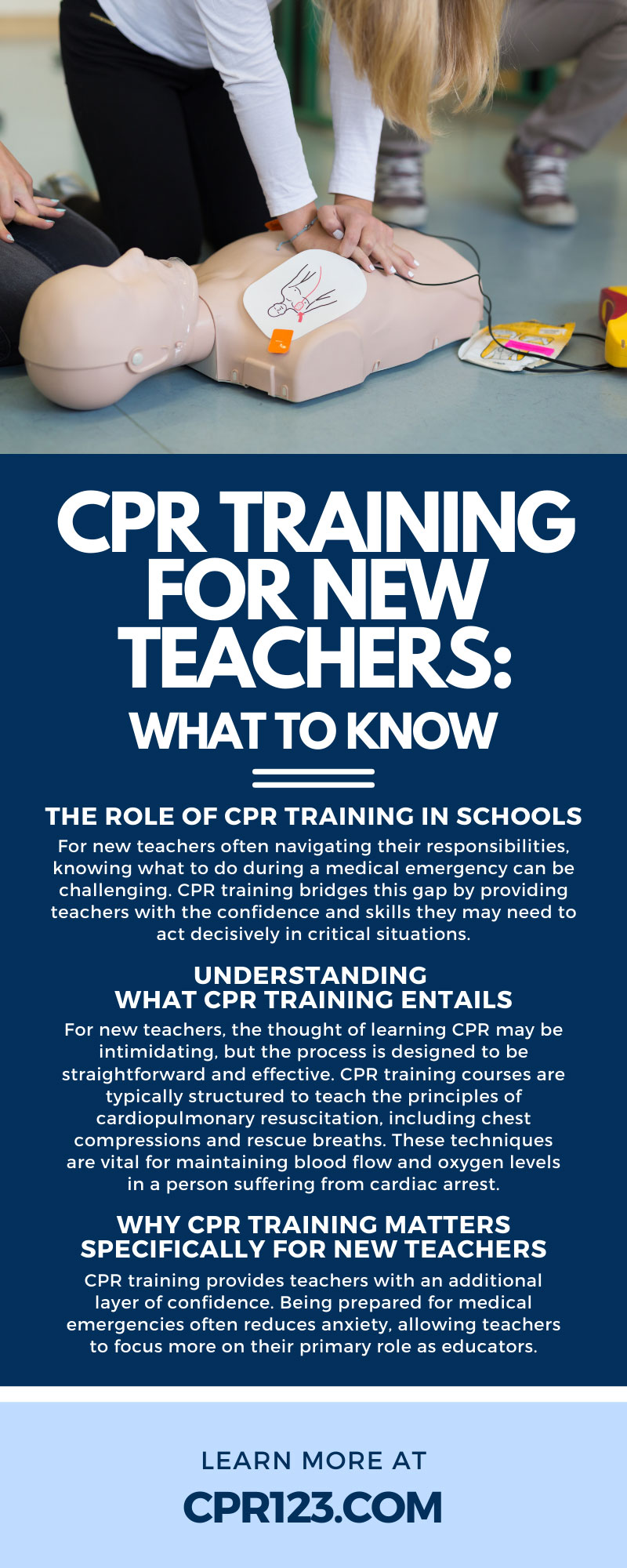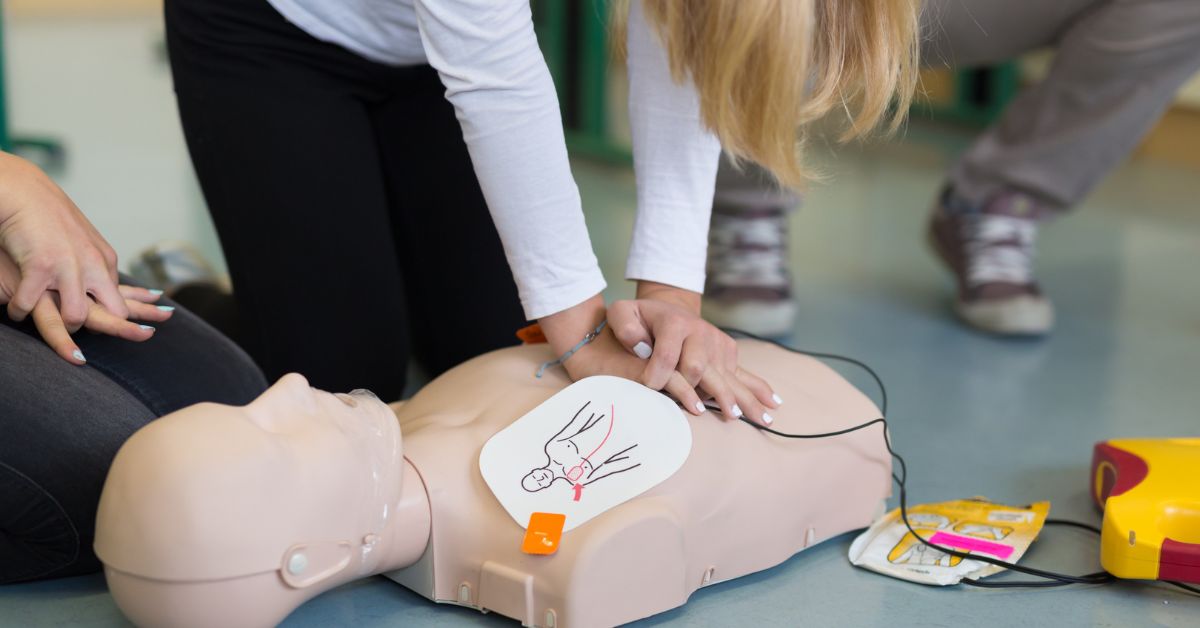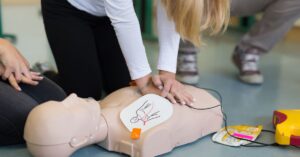The first day in a classroom brings excitement and a sense of responsibility. For many new teachers, the idea of shaping minds is what drives their passion. But teaching is not just about lessons and quizzes; it also involves ensuring the safety and well-being of students.
Understanding the importance of CPR training for new teachers and what to know about this certification equips educators with the skills to act swiftly during emergencies and potentially save lives. Read on for a comprehensive guide on why CPR training is essential for new teachers, what the training entails, and the benefits it provides.
The Role of CPR Training in Schools
Schools are busy environments filled with children who are exploring, learning, and engaging in physical activities. With such constant activity, the likelihood of accidents or medical emergencies is always present.
For new teachers often navigating their responsibilities, knowing what to do during a medical emergency can be challenging. CPR training bridges this gap by providing teachers with the confidence and skills they may need to act decisively in critical situations.
Cardiac arrest, choking, and respiratory distress are among the most common medical emergencies that can happen in a school setting. Waiting for professional medical help can take minutes that some victims simply cannot spare.
Schools often encourage or even require their teachers to be CPR-certified, as the cert and accompanying training empowers teachers to take immediate action. Students are given the best chance of recovery until emergency responders arrive.
Understanding What CPR Training Entails
For new teachers, the thought of learning CPR may be intimidating, but the process is designed to be straightforward and effective. CPR training courses are typically structured to teach the principles of cardiopulmonary resuscitation, including chest compressions and rescue breaths. These techniques are vital for maintaining blood flow and oxygen levels in a person suffering from cardiac arrest.
The training also introduces participants to the use of automated external defibrillators (AEDs), devices commonly available in schools that can help restart the heart with a controlled electric shock.
Along with CPR techniques, the training sessions cover crucial scenarios, from child and infant emergencies to adult-focused practices. Trainees will leave the course with hands-on experience, often practicing with training dummies and simulated scenarios, making them fully equipped to handle real-life emergencies.
Why CPR Training Matters Specifically for New Teachers
One area in which new teachers can immediately make an impact is their ability to respond to emergencies. CPR training ensures that even teachers who are still adjusting to their roles can make an immeasurable difference in critical situations.
CPR training provides teachers with an additional layer of confidence. Being prepared for medical emergencies often reduces anxiety, allowing teachers to focus more on their primary role as educators.
When teachers know they can act swiftly and correctly in an emergency, they can contribute more fully to creating a safer and more supportive learning environment in their new role.
How CPR Training Creates a Safer School Environment
The overall safety of a school relies on teachers and staff members being well-prepared for all types of emergencies, medical included. When all teachers, especially new ones, are equipped with CPR knowledge, the school functions like a cohesive unit that responds seamlessly in moments of crisis.
Statistics have shown that prompt CPR can double or even triple the chances of survival for cardiac arrest victims. Beyond the classroom, such preparedness extends to school outings, athletic events, and extracurricular activities so teachers can prioritize and enforce student well-being at all times.
Leveraging CPR Training for Professional Enrichment
Apart from its lifesaving value, CPR training also adds a layer of professional growth to a teacher’s resume. Teachers who are certified demonstrate a commitment to education in a way that noncertified teachers don’t, in that they can care for the health and safety of their students.
Further, teachers can take pride in being part of a profession that values preparedness and proactivity. CPR certification is widely recognized and respected and can open doors for additional roles, such as becoming a health safety team member or mentor for other staff members looking to gain similar skills.
The Unseen Benefits of CPR Preparedness in Education
While the immediate benefits of CPR training are clear, the long-term impacts are equally profound. CPR-trained teachers often inspire a culture of health awareness and safety within schools. Students may also become curious about first aid and CPR, furthering discussions about emergency preparedness in classrooms.
CPR training isn’t just an individual achievement; it’s a community-building tool. Schools with CPR-trained staff and an emphasis on health and safety are more likely to attract parents and guardians who value these qualities. Such communal trust solidifies a school’s reputation as a place where student well-being is the highest priority.
How To Get Started With CPR Training as a New Teacher
There are plenty of accessible options available for teachers eager to start their CPR training. Many organizations offer in-person and online CPR certification courses for convenience. These courses are structured to fit busy schedules while still covering essential skills comprehensively.
CPR123 provides a comprehensive and accessible AHA Heartsaver First Aid CPR AED course designed to equip you with all the essential skills needed to handle life-threatening emergencies with confidence. Tailored for teachers and educators, this course covers everything from basic first aid techniques to CPR and AED usage so you’re prepared to respond effectively in critical situations.
School districts might also organize CPR certification sessions as part of their professional development programs. Teachers should inquire with their school administration or HR departments to find out if such arrangements are available. The important thing to remember is that CPR training is a simple yet powerful step toward becoming a more effective and responsible educator.
Ending on Purposeful Action
For any new teacher stepping into a classroom, the list of responsibilities may seem endless. However, one of the most fundamental contributions a teacher can make is prioritizing their students’ safety. Enrolling in CPR training for new teachers isn’t just about learning a skill; it’s about creating an environment where preparation meets compassion. With accessible resources and a strong motivation to enhance classroom safety, CPR training becomes an invaluable part of a teacher’s toolkit.








